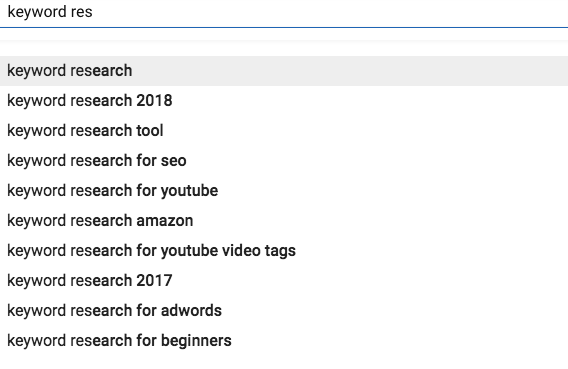Here’s What You Need to Know about YouTube SEO
29 May 2018
By Tovey
These days, the power of video is often talked about, but how powerful can a video be if it can’t even be found?
First and foremost, and this one probably goes without saying, you’ve got to create great content. Insightful, engaging and meaningful videos will naturally attract comments, shares and general interaction which can be hugely beneficial for your brand as a whole. Before you even consider getting your videos out there, you need to feel confident in what you’re creating and the message you’re putting across.
Keyword research
Keyword research – my old friend! You’ve likely heard about this gem before and if you haven’t, then now is the time to brush up on it. When it comes to ranking, keyword research is a crucial part of your YouTube SEO.
Just as you (likely) would to optimise on-site content, you need to start by generating a list of keyword ideas and then running them through some software, such as Google’s Keyword Planner or the Keyword Explorer from Moz. For this, YouTube itself can be the perfect place to start! Head to the search bar and start typing in some ideas that you feel best match what your video has to offer. In the same way that Google predicts and suggests searches, YouTube will present you with some terms that are being searched for on the platform. If you’re struggling to generate enough keywords, you can also take a look at your YouTube traffic report to see what keywords people are using to find your videos.

Competitor research
It’s always handy to take a look at what your competitors are doing. If you can analyse their top-performing videos, you can get a really good insight into the kind of titles, tags, keywords and in a broader sense, topics that perform well. We are in no way saying that you should copy what others are doing word for word, but you can certainly draw inspiration from your competitors.
Got your keywords? Now, where do you put them?
Identify your main keyword and then ensure that this is featured in the title of your video – this is crucial! Similar to the meta titles you’ll optimise for on-site content, the earlier your keywords appear in the title the better, so try and get them in at the start.
Description
Treat your description box like you would a blog post: this is the place for your long-tail keywords, synonyms and links. In order to be found, you don’t want to just cram those keywords in there as is, you’ve got to work them into the description in a natural way. With a compelling, interesting video blurb, you’re not only giving people a better understanding of who you are and what the video is about, you’re holding up signposts to YouTube and other search engines that your video content is able to answer the kinds of questions people are asking.
You don’t have to write a short story – and certainly not as much as you would for a standard blog post – but you should aim for around 250 words. This will give you the opportunity to convey all the necessary points about your video as well as integrate the keywords you found during your research.
Lastly, don’t forget to include a CTA with a link or two to a relevant landing page on your website or social media channel.
Tags
Remember the keyword research we mentioned earlier? Well, it’s not just for your video title and description. YouTube allows you to add so-called ‘tags’ in order to help you categorise your content. Now is the opportunity to let those keywords shine! You are limited to the number of tags you can use, so pick wisely and try to opt for the long-tail keywords where possible.
Sharing is caring…
Unfortunately, you can’t just publish the video, sit back and watch as the views skyrocket. Part of what will get your video seen is sharing and promoting it across the channels you have available. Make full use of this! Ask employees/colleagues/friends to share the video as a way of increasing the organic reach. If you want to get a little more specific, in terms of who sees the video, you could also consider using paid promotions on social platforms.
So, that’s YouTube SEO in a nutshell.
A lot of these tips and tricks will come with time and practice. So, keep uploading, editing, analysing and refining! For more advice on a variety of subjects including SEO and social, take a look at some of our other blogs.